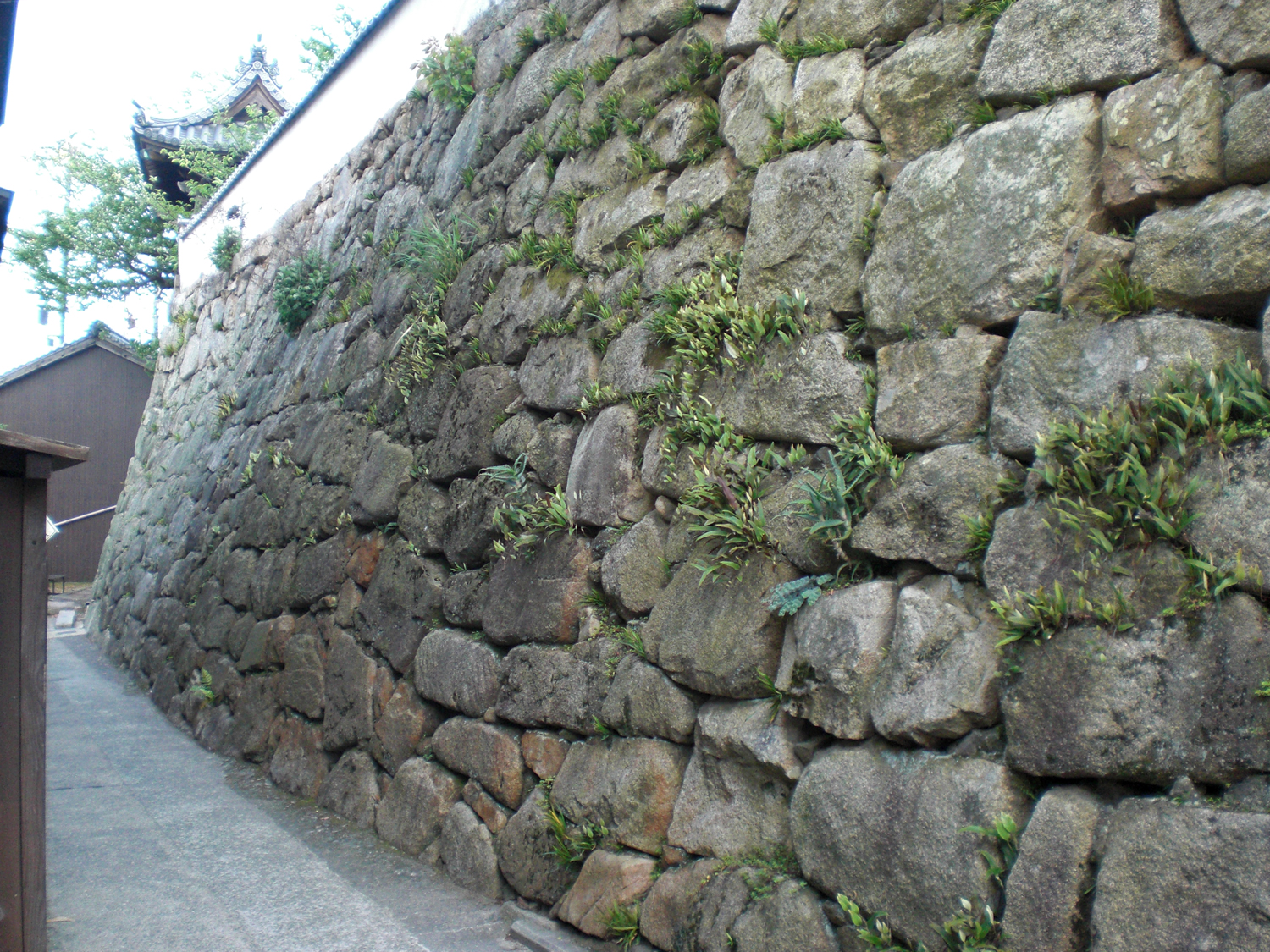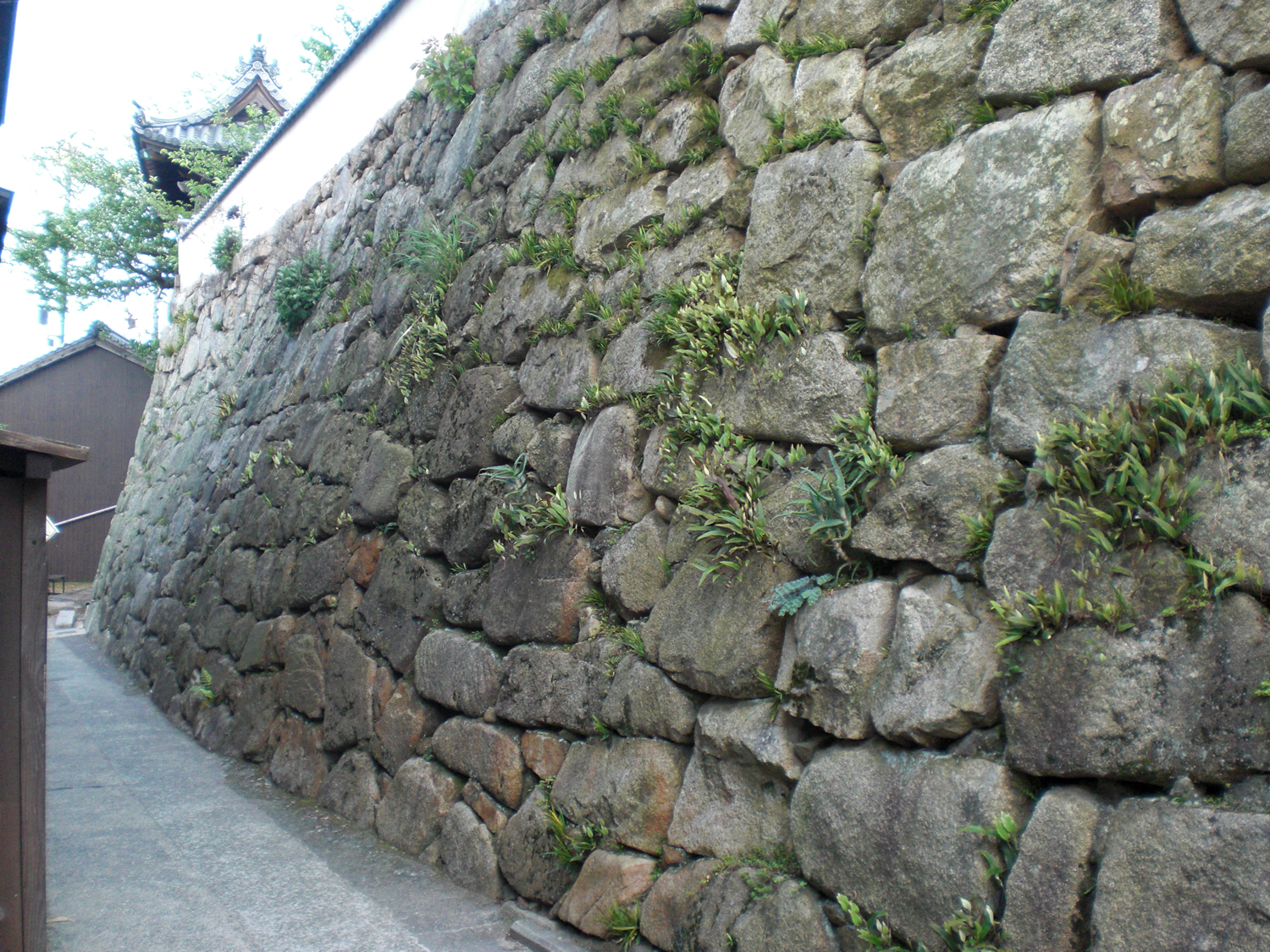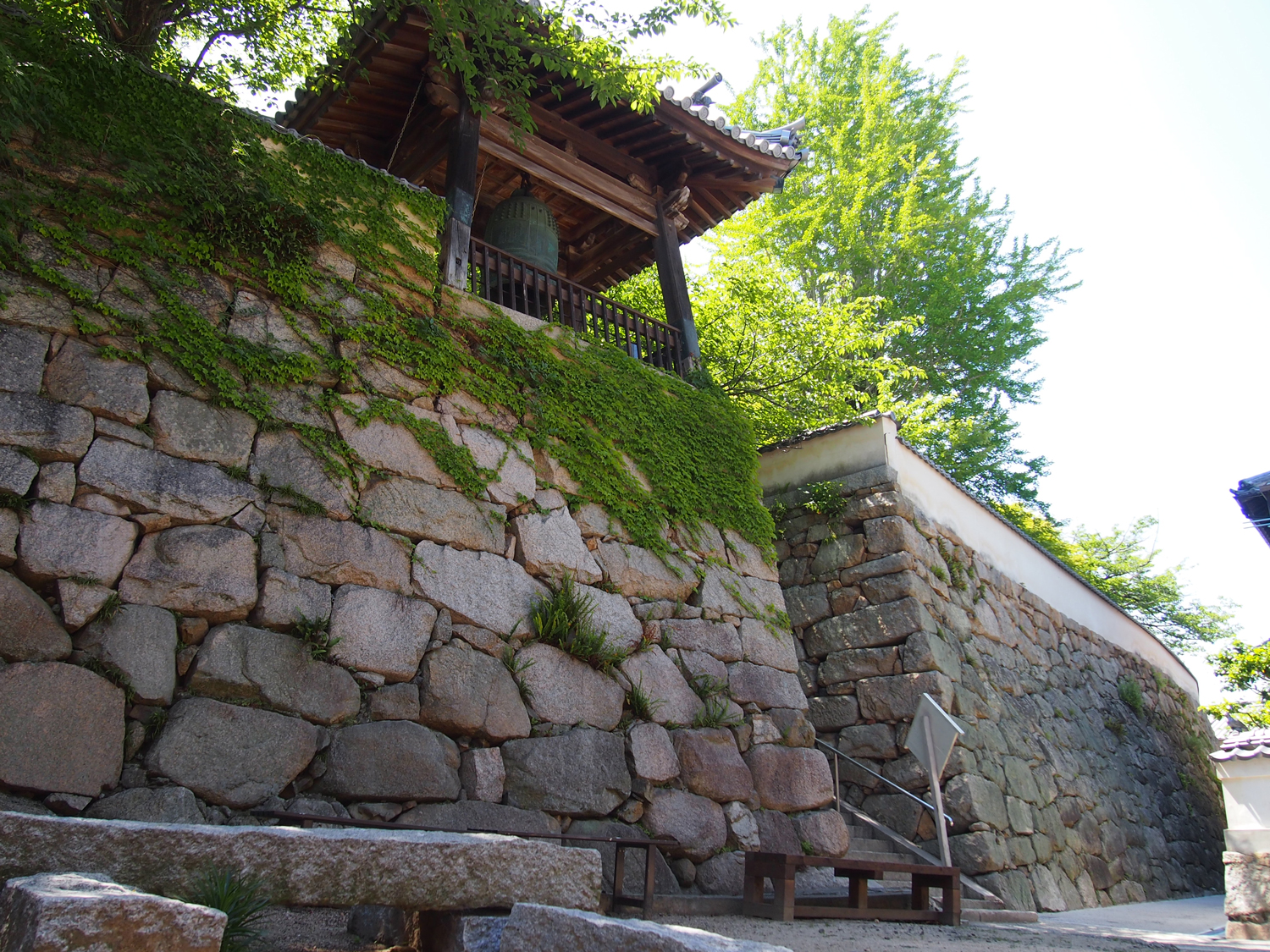満舟寺 Manshūji Temple
満舟寺は、将軍平清盛(1118~1181)がこの地で阿弥陀如来の名を繰り返し唱えて嵐を免れたことにちなんで創建されたといわれている。清盛はその感謝の気持ちを込めて、阿弥陀仏の発端である十一面観音像を安置した。それが後に満舟寺となった。 しかし、寺伝によると、観音堂が建立されたのは清盛の死後数百年後の1718年である。その後、鐘楼、厨子(くり)、石段などが徐々に増設され、1751年(宝暦元年)には広島藩から真言宗の寺院として認可された。
境内には、俳人栗田樗堂(1749~1814)の墓碑や松尾芭蕉(1644~1694)の句碑などがある。これらは、江戸時代に御手洗の俳句文化が隆盛し、琉球王国(現沖縄県)の歌人たちとの交流があったことを物語っている。1609年に薩摩藩に侵攻された後、琉球は家臣国家となり、江戸時代を通じて徳川幕府に献上するために、優秀な学者や芸術家、歌人たちを江戸の都(現在の東京)に派遣した。その際、御手洗を訪れることもあった。このような御手洗の人々と琉球人との友好的な関係は、1806年(文化3年)に一行から満州寺に贈られた扁額(現在の観音堂に保存されている)に不朽のものとして刻まれている。

満舟寺を囲む石垣は、18世紀半ばに築かれたものである。その起源ははっきりとは記録されていないが、かつて御手洗の海岸線だった場所にあり、大小の石を組み合わせて作られたことから、その構造や立地条件から、水軍の防御のためのものであった可能性が高いと考えられている。この技法は、戦国時代の軍事建築物を作る際によく使われていたもので、乱れ築きと呼ばれている。この城壁の由来については、1585年の秀吉の四国征伐の際、将軍・加藤清正(1562-1611)が豊臣秀吉(1537-1598)に対抗するために築城したとする説が有力である。その規模の大きさと石の大きさから、平成11年には呉市の有形文化財に指定されている。このような塀はこの地域では珍しい。

According to legend, Manshūji Temple was founded after the military commander Taira no Kiyomori (1118–1181) was saved from a storm by repeatedly chanting the name of Amida Buddha. To express his gratitude, Kiyomori enshrined a statue of the eleven-headed manifestation of Kannon, an emanation of Amida Buddha, and that shrine eventually became Manshūji Temple. Oddly, according to temple records, the Kannondō hall was erected in 1718, centuries after Kiyomori’s death. After the hall was built, a bell tower, temple kitchen (kuri), and stone steps were added to the complex, and in 1751, the Hiroshima domain officially licensed Manshūji as a Buddhist temple of the Shingon school.
The temple grounds also include the tombstone of haiku poet Kurita Chodō (1749–1814) and a stone monument inscribed with a poem by haiku master Matsuo Bashō (1644–1694). The presence of these monuments is a testament to the culture of haiku poetry that flourished in Mitarai during the Edo period (1603–1867) and that was furthered by interactions with poets from the Ryūkyū Kingdom (now Okinawa Prefecture). Ryūkyū became a vassal state of Japan after the Satsuma domain invaded in 1609, and throughout the Edo period, it paid tribute to the Tokugawa shogunate by sending groups of distinguished scholars, artists, and poets to the shogunate in Edo (now Tokyo). On their way there, these delegations sometimes passed through Mitarai. The amicable relationship that developed between the Ryūkyūans and the community of Mitarai is immortalized in an artistic temple nameplate that was presented to Manshūji by a delegation in 1806 and which is now preserved in the Kannondō hall.

The stone wall surrounding Manshūji Temple was built in the mid-eighteenth century. Although there is no clear record of its origins, the location and structure of the wall suggest that it was likely a naval defense, as it is situated on what was once Mitarai’s coastline and was built by fitting stones of various sizes together. This technique, called midarekizuki (literally, “random construction”), was commonly used to build military structures during the Warring States period (1467–1568). The most popular theory on the origin of the wall is that Katō Kiyomasa (1562–1611), a general and cousin of warlord Toyotomi Hideyoshi (1537–1598), built it as a frontline defense during Hideyoshi’s Shikoku campaign in 1585. Due to the wall’s unusually large scale and the size of the stones used to construct it, the wall was designated a Tangible Cultural Property by the city of Kure in 1999.


